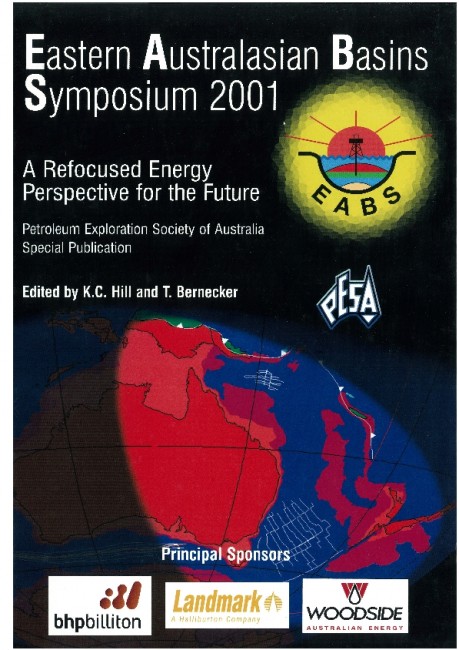Publication Name: Eastern Australian Basins Symposium 2001
Authors: D.H. Moore and D. Wong
Date Published: November 2001
Number of Pages: 32
Reference Type: Magazine Article
Abstract:
Although aeromagnetic interpretations are not usual aids in detailed assessments of hydrocarbon provinces, they can provide insights into the deep structures that often control the distribution of hydrocarbons withinthe basin fill. This paper summarises an interpretation derived from integrating the 1999 AGSO aeromagnetic data with pre-existing seismic and other data.
The interpretation divides the Gippsland Basin into three zones that link basement structure, basin development and, ultimately, the locations of hydrocarbons. In the west, the a Zone has a basement of the Selwyn Block, the extension of the Tasmanian craton into Victoria. Its eastern edge is just east of the Strzelecki Ranges. No significant oil or gas discoveries have been made in the relatively thin sequence preserved over the Selwyn Block. This zone probably also includes the southern edge of the basin.
Typical lower Palaeozoic Lachlan Fold Belt rocks floor the b Zone, the 'offshore' Gippsland Basin and the easternmost parts of the onshore section. Almost all of the 4.1 BBL of oil and 13 TCF of gas found in the basin have come from this region. The 15 km thick basin sequence includes both marine and terrestrial rocks. Many major hydrocarbon accumulations cluster on the edges of a major magnetic low, suggesting a Palaeozoic influence on their location.
The y Zone is mostly in the deep water in and around the Bass Canyon. Sole and Basker-Manta are on the zone edges, but some seemingly prospective parts have not been drill tested and have only limited seismic cover. The Lachlan Fold Belt basement is overlain by a possible Permo-Triassic sequence. In the Eastern Graben, sediment
thickness reaches 15 km, including about 5 km of Cretaceous and early Tertiary Latrobe Siliciclastics and Golden Beach Subgroup, overlain by up to 2 km of late Cainozoic Seaspray Group. Fluids are presently venting from its eastern edge.


